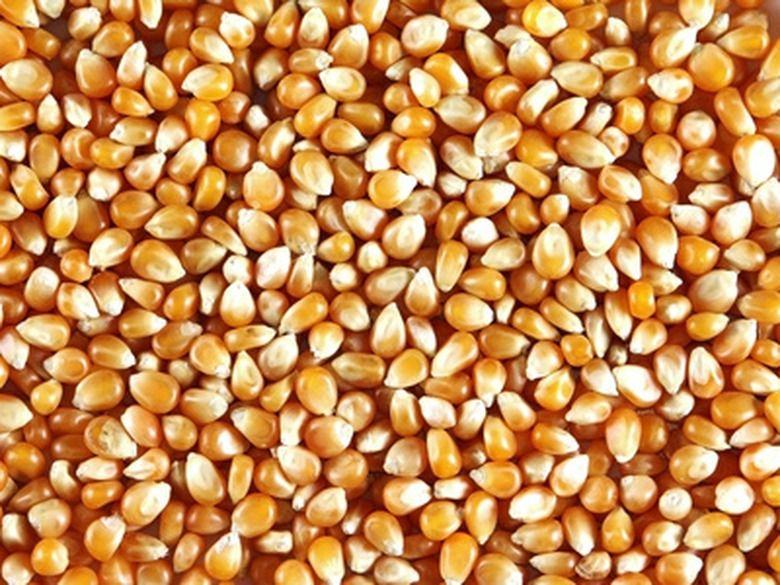Anatomy Of A Corn Seed
Corn is one of the best-known examples of a monocotyledon, a broad categorization of flowering plants based on anatomy inside of the seed. For that reason, the anatomy of the corn seed is of interest to botanists, but gardeners benefit as well from a better understanding of the structures within corn kernels and how they affect the growth and taste of the crop.
Function
The evolution of the seed represented a leap forward in progress for the plant kingdom. Seeds provided several advantages over their spore-producing predecessors. Embryos received extra protection from the tough seed covering and extra room for nutritional material nourishing the young plant. Looking at a corn seed, you can observe all of these structures.
Protective Features
If you've ever eaten an ear of corn and afterward found tough flecks caught in your teeth, then you have observed the pericarp, or seed coating. The pericarp develops from the plant's ovary and protects the embryo inside from damage. According to the Texas Tech University's Department of Plant and Soil Science, the tips of the shoot and root of a corn plant are also protected by structures called the coleoptile and coleorhiza, respectively. As the seed germinates, these cover the tips of the developing embryo as they push through the soil.
- Corn is one of the best-known examples of a monocotyledon, a broad categorization of flowering plants based on anatomy inside of the seed.
- For that reason, the anatomy of the corn seed is of interest to botanists, but gardeners benefit as well from a better understanding of the structures within corn kernels and how they affect the growth and taste of the crop.
Nutrition
The part of the corn seed you're probably most familiar with is the endosperm, which comprises two-thirds of the corn seed and provides it with its sweet flavor. If you plant a corn seed, however, the endosperm serves a different function. During fertilization of the seed, an extra sperm cell provided by the male parent fuses with maternal cells inside the ovary, producing the nutrient-rich endosperm. As the young plant develops, the starchy endosperm provides a food source.
Embryo
Tucked against one side of the seed, the embryo represents a miniature version of the adult plant, complete with a rudimentary leaf and root. At the top of the embryo is the scutellum, or cotyledon, a primitive leaf. Because corn plants are monocotyledons–meaning "one cotyledon"–they have only a single leaf. When the plant emerges from the seed, you can observe the cotyledon, but in the seed it functions to absorb nutrients from the endosperm.
- The part of the corn seed you're probably most familiar with is the endosperm, which comprises two-thirds of the corn seed and provides it with its sweet flavor.
- When the plant emerges from the seed, you can observe the cotyledon, but in the seed it functions to absorb nutrients from the endosperm.
The primitive root inside the corn seed is called the radicle.
Growth
From the plant's perspective, the most important function of the seed is growth. The embryo within the seed is equipped to grow rapidly, establishing the plant quickly once it breaks free of its protective seed. You can find tissue called the apical meristem at both the tip of the shoot and the root. These cells divide rapidly, causing the stem and roots to elongate. Even in mature plants, apical meristem causes the plant to continue growing.
